Introducing La Bièvre
Everybody knows about the Seine River, the origin and soul of Paris that bisects the city from east to west. But did you know that there is a second river in Paris?
The Bièvre River is a 36 km water course with its source in the Yvelines department (southwest of Paris), not far from Versailles. The Bièvre River entered the French capital through the current Parc Kellerman in the 13th Arrondissement, and it ran through the current districts of Paris 13 and Paris 5 – more precisely through La Butte aux Cailles neighborhood and Parc Montsouris, then through Square Le Gall and south of the Jardin des Plantes – before flowing into the Seine River, not far from Gare d’Austerlitz.
Technically speaking, La Bièvre still exists in Paris, but its waterway through the capital is totally underground, that’s why perhaps you did not know about it. Keep on reading for the history and fate of the second river of Paris!
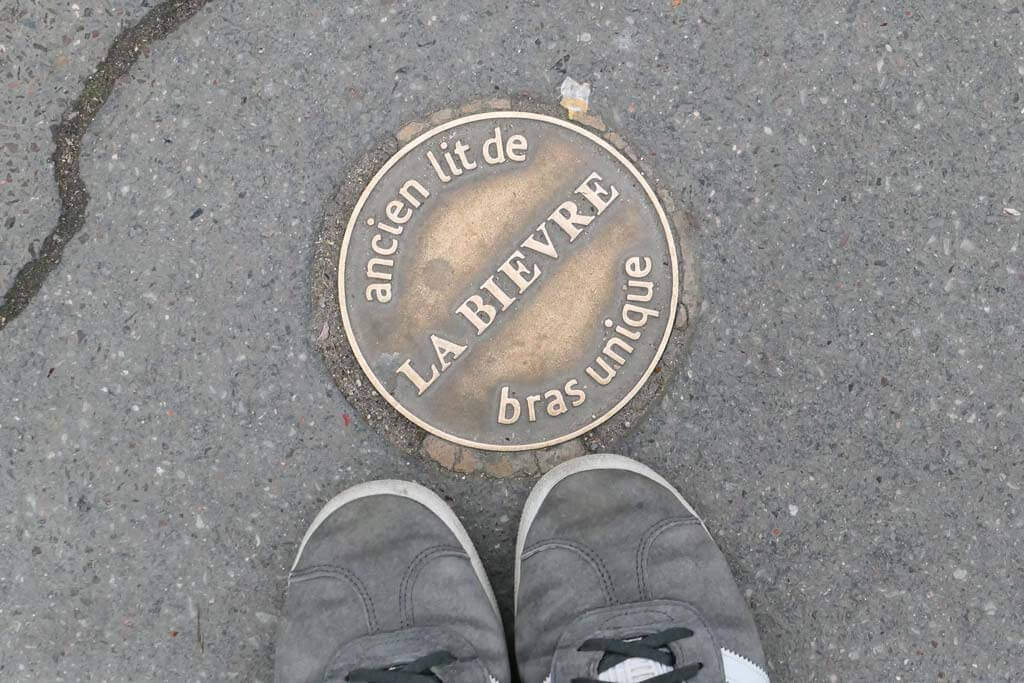
History of the Bièvre River
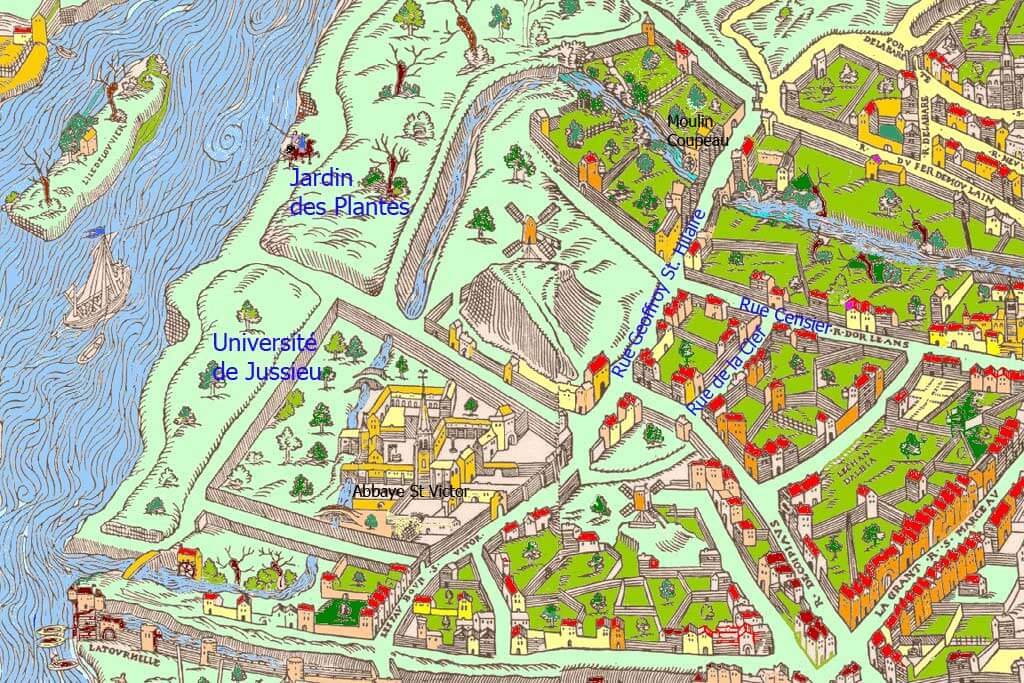
Perhaps this lesser-known tributary does not evoke romantic imagery of the French capital quite like the Seine River, into which it once decanted. Still, it has an interesting history as old as Paris itself. The name Bièvre comes from the Gaulish word “bibero,” meaning “beaver,” which gave the word bièvre in Old French. So, the Bièvre is the “Beaver River.”
The first activity present on the outskirts of the Bièvre in Paris was that of limestone quarries. This activity dates back to Roman times and continued until the 19th century on the borders of the commune of Gentilly. In Roman Paris, the inhabitants of Lutetia built an aqueduct to lead the water to the city.
In the 11th century, the presence of the Bièvre also led to the construction of many water mills along its course, such as the Moulin de Croulebarbe mentioned in 1214, the Moulin de Prés mill, the Moulin de Pointe, and many others.
In the middle of the 12th century, the canons of Saint Victor Abbey (today disappeared) diverted the Bièvre River to irrigate their land and activate their flour mill. The canal, three meters wide, led the waters of the river in front of Notre Dame near the current Rue de Bièvre. After the construction of the enclosure of Philippe Auguste (1180-1210), this canal was diverted rue des Fossés Saint-Bernard to run along the fortification and flow into the Seine at the height of the Pont de Sully.
To supply the mills, the course of the river was modified, as well as the topography of the land: a dyke and dams were built, leading to the creation of two river arms known as Bièvre Vive (living Bièvre) and Bièvre Morte (dead Bièvre, the original river bed).
From as early as the 14th century, the river provided a lifeline for the local industry. In the 15th century, the merchant Jean Gobelin – a specialist in scarlet red and dyed wool – had a workshop built overlooking the Bièvre. The waters of this tributary of the Seine, very rich in nitrogen, made it possible to obtain brilliant colors. Soon other artisans needing lots of water for their businesses followed: tanners, shoemakers, laundry workers, brewers, and weavers.
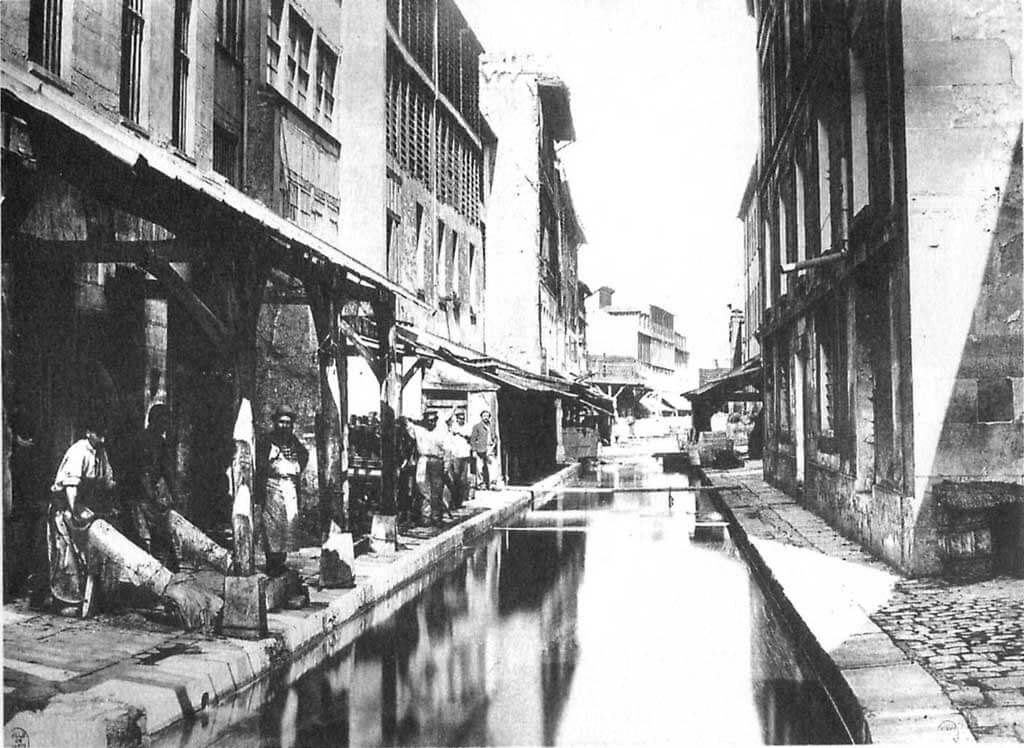
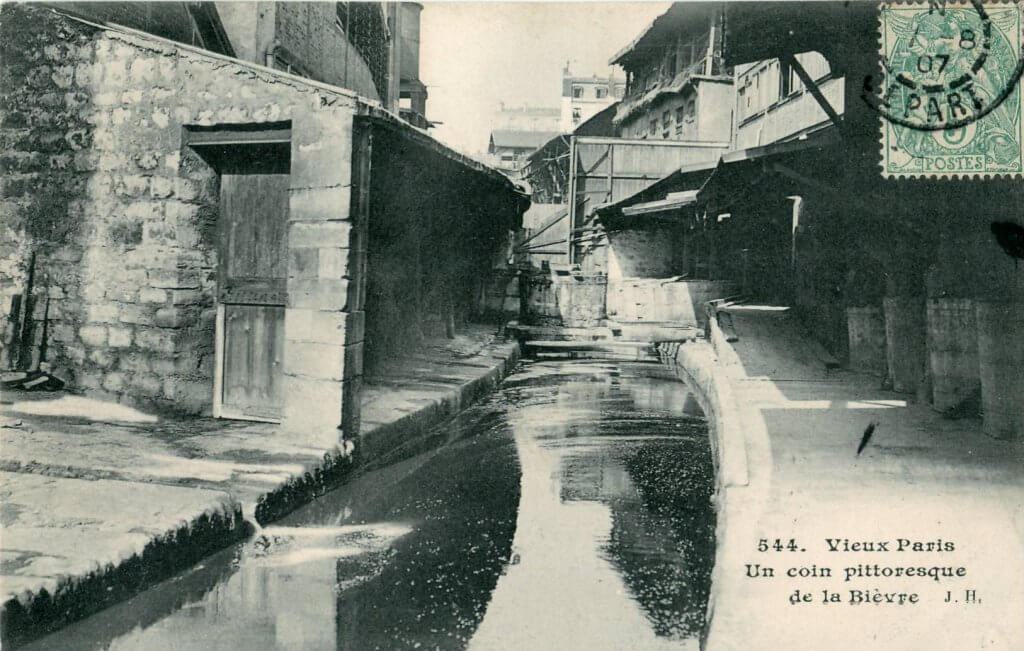
The growth of this kind of industry was the origin of the pollution and stench of the Bièvre River to the point of causing health problems to the inhabitants of Paris. By the early 1900s, La Bièvre had become so polluted that city authorities decided to cover it and divert it to the sewers.
Baron Haussmann “solved” the problem: some parts of the river were incorporated into the city’s sewer system, while others were covered by concrete. By 1912, La Bièvre had disappeared entirely from Paris’ cityscape.
The Bièvre River Today
Nowadays, La Bièvre is a river in two parts. It flows in the open air through the southern suburbs of Paris before entering a network of pipes in the belly of the metropolitan area.
Curious wanderers can still follow the watercourse of the Bièvre River through Paris by following the copper plates and other reminders placed at street level on the former sidewalks of the river (Paris 5 and Paris 13).
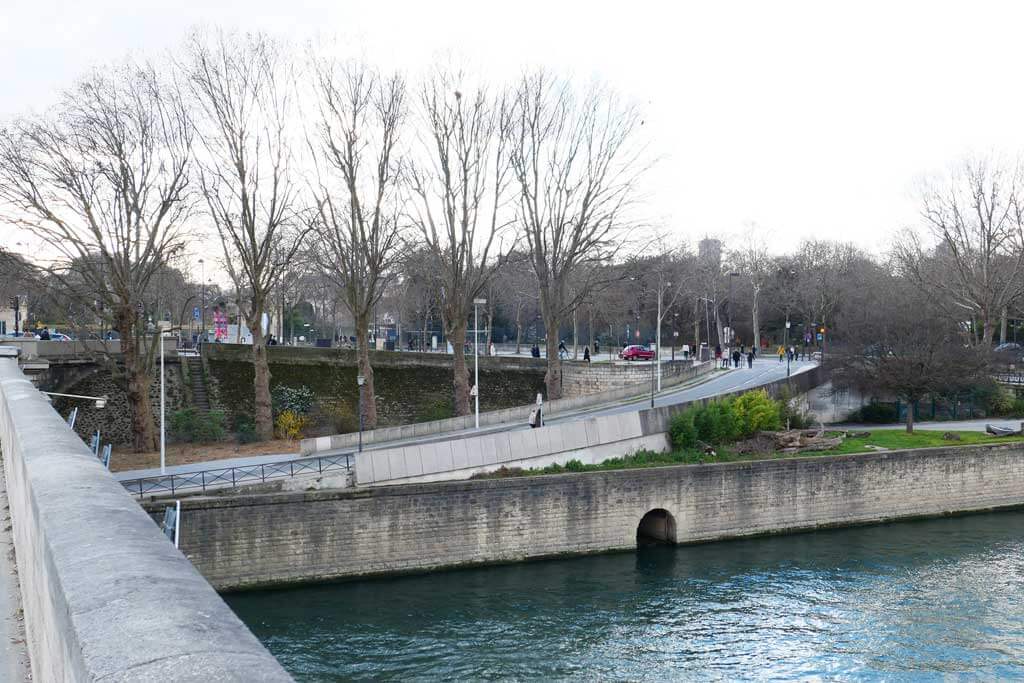
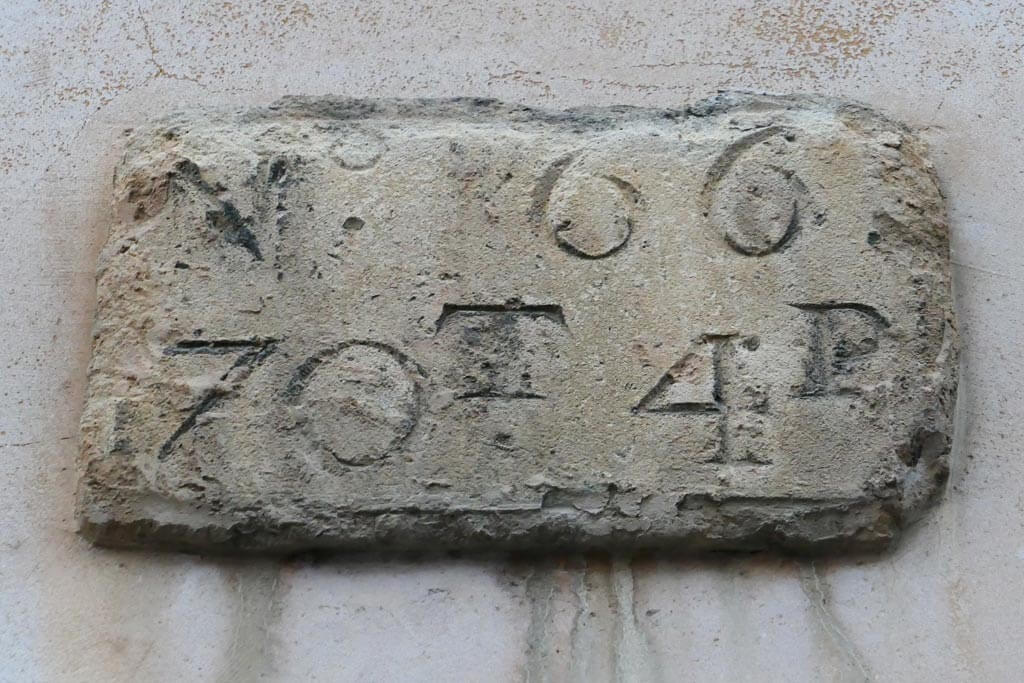
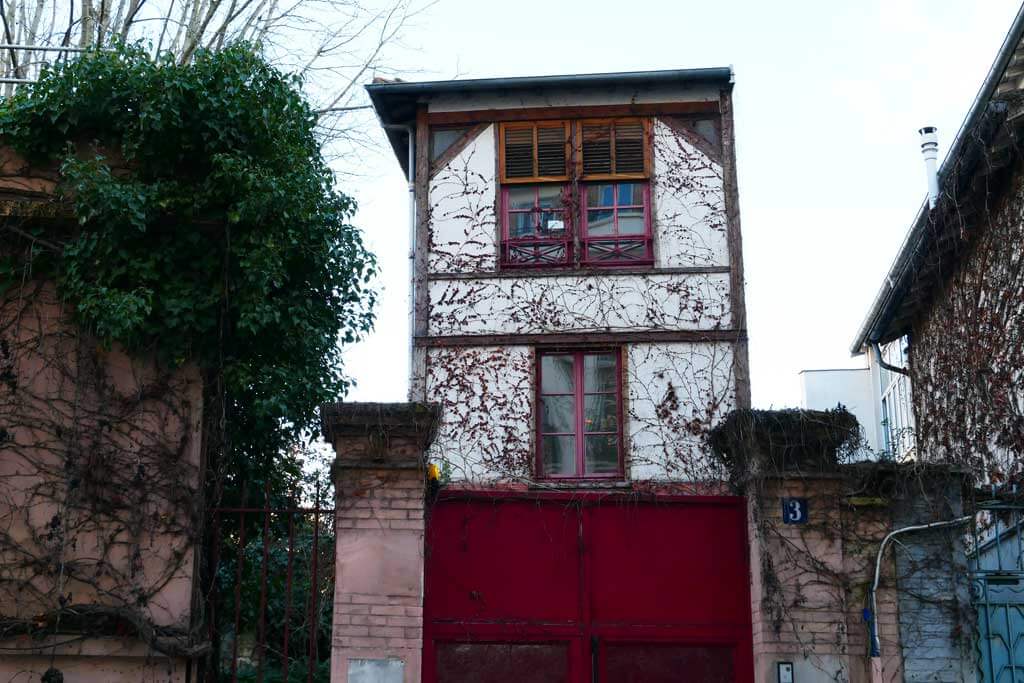
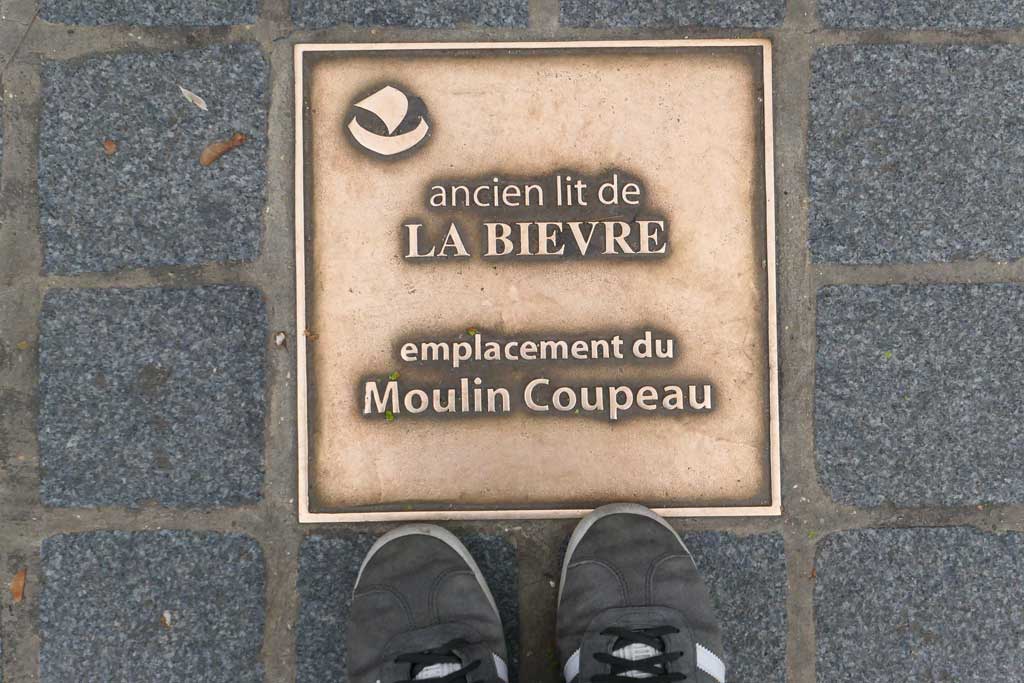
Photo Legend:
- The confluence of the Bièvre River into the Seine River at Port Saint-Bernard, under Place Valhubert
- Engraved stone 8 Rue Berbier-du-Mets indicating the length of the Bièvre to be maintained
- Old tannery at Rue Barrault
- Moulin Coupeau (Coupeau Mill) location at Rue Geoffroy-Saint-Hilaire
Over the last 20 years, several local councils in the region have undertaken projects to bring the river back into view. The latest section of the river to be revived was in the commune of Arcueil, on the doorstep of the city center — Paris is the next big challenge.
During the campaign for municipal elections in Paris last year, the Green Party proposed “the rebirth of la Bièvre,” and Mayor Anne Hidalgo’s Socialist Party agreed to pursue it as part of a coalition deal. The idea is to reopen various sections within Paris, especially in the parks and gardens that follow the historical pathway of the Bièvre in Paris, around six kilometers in total.
A feasibility study is underway, and the City Council expects to complete the first section within the city limits by the end of the Mayor’s current term in 2026. It will join several stretches of the Bièvre uncovered over the last few years in smaller towns, parks, and other underdeveloped areas.
The Bièvre River is an important part of the city’s history, a piece of history that disappeared from the surface because of the disregard of residents. The Bièvre River can also have a significant role in Paris’ ecosystem: bodies of water, just like trees and plants, help cool down their surrounding areas.

